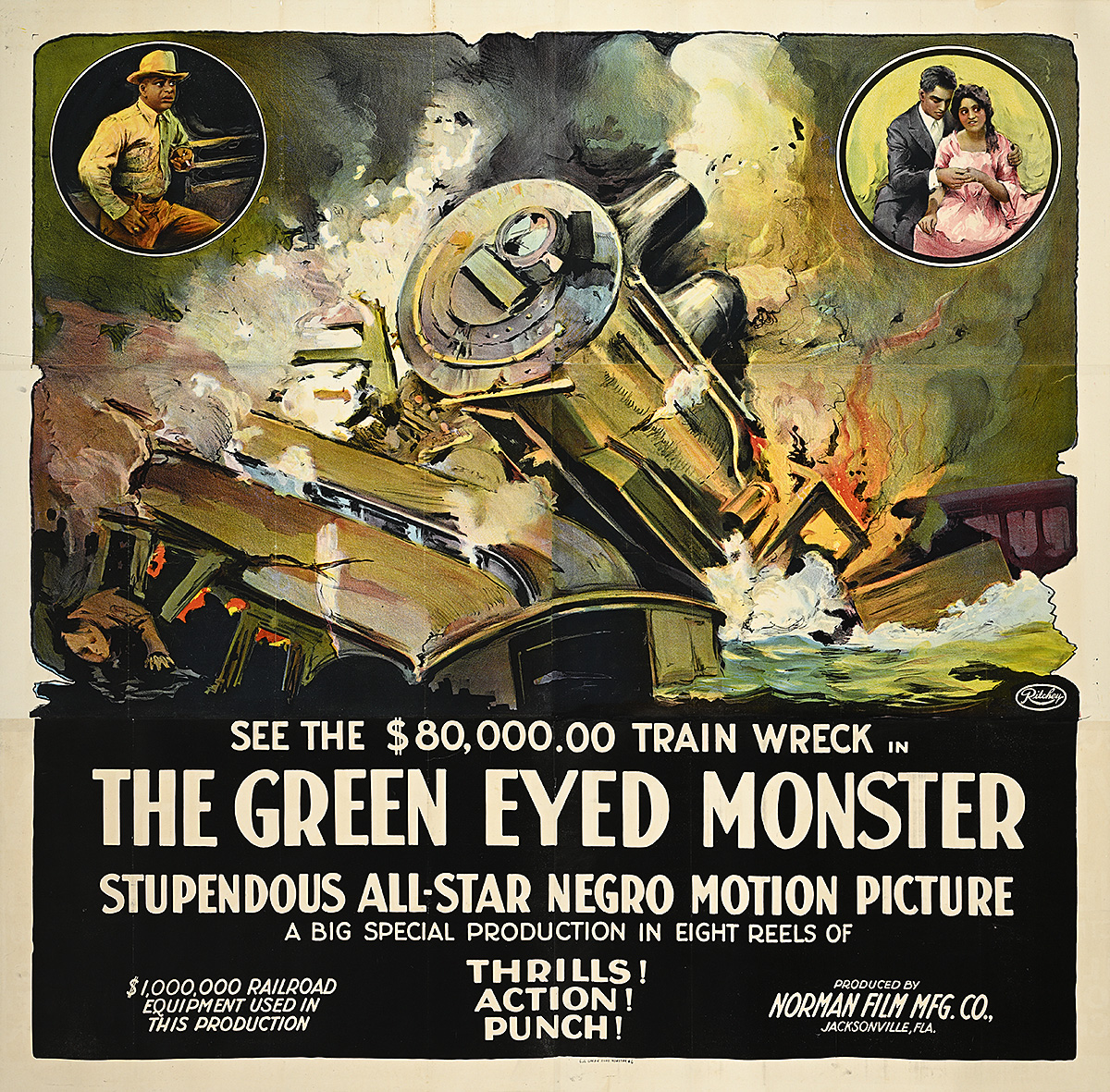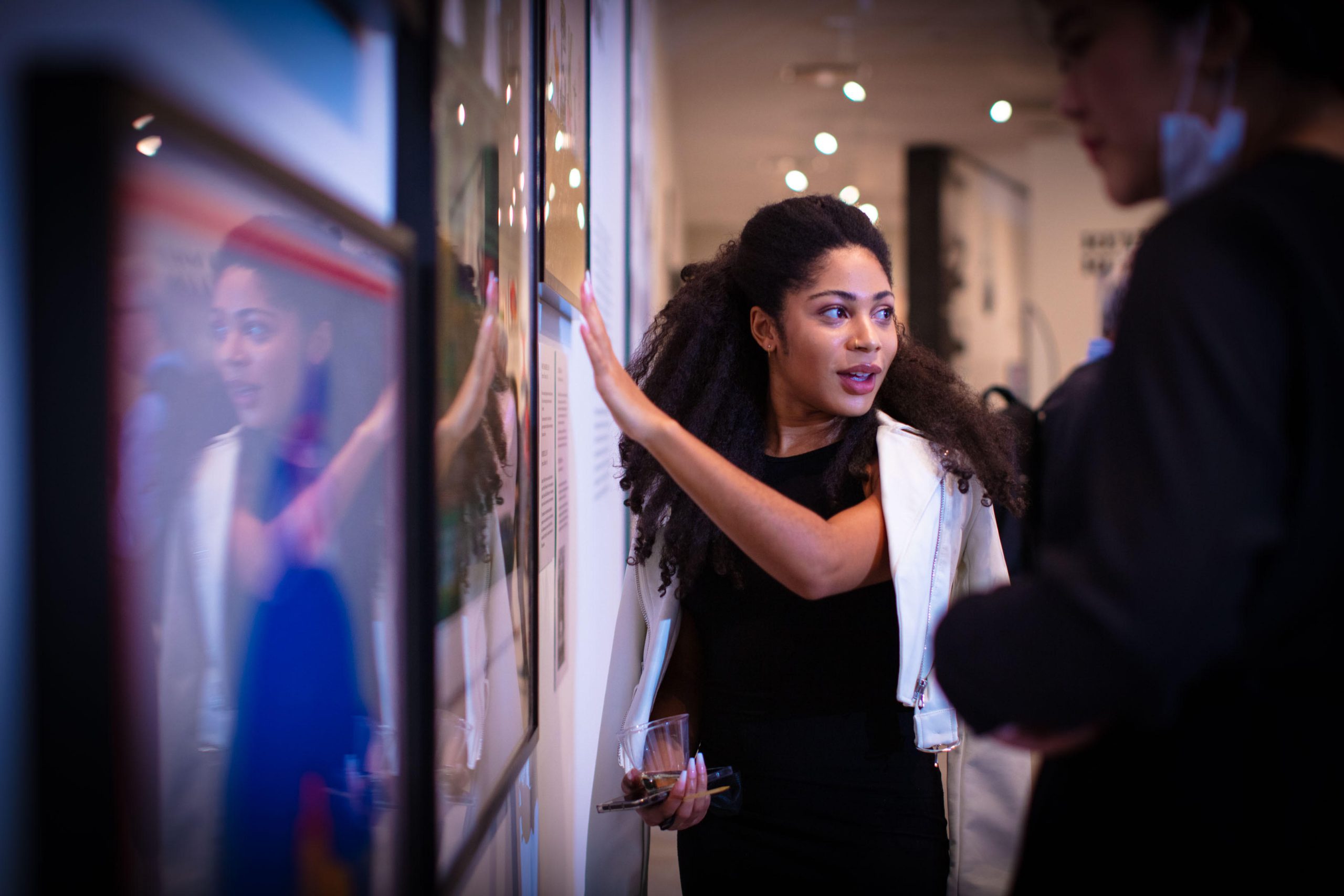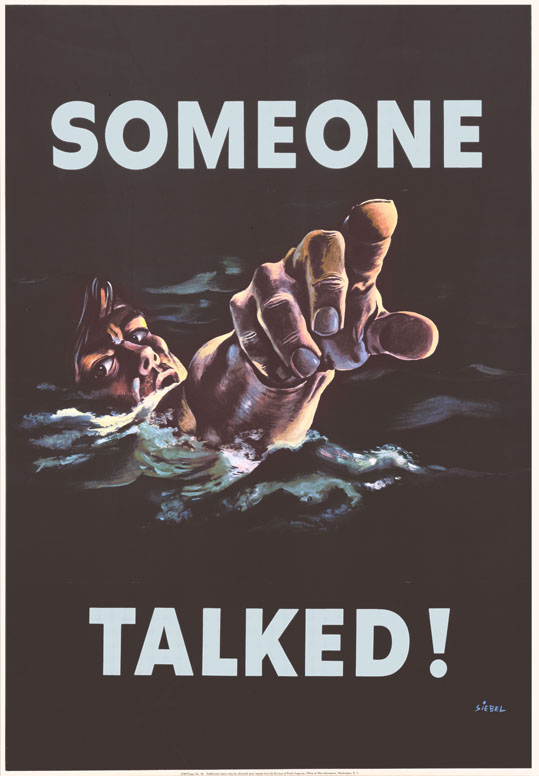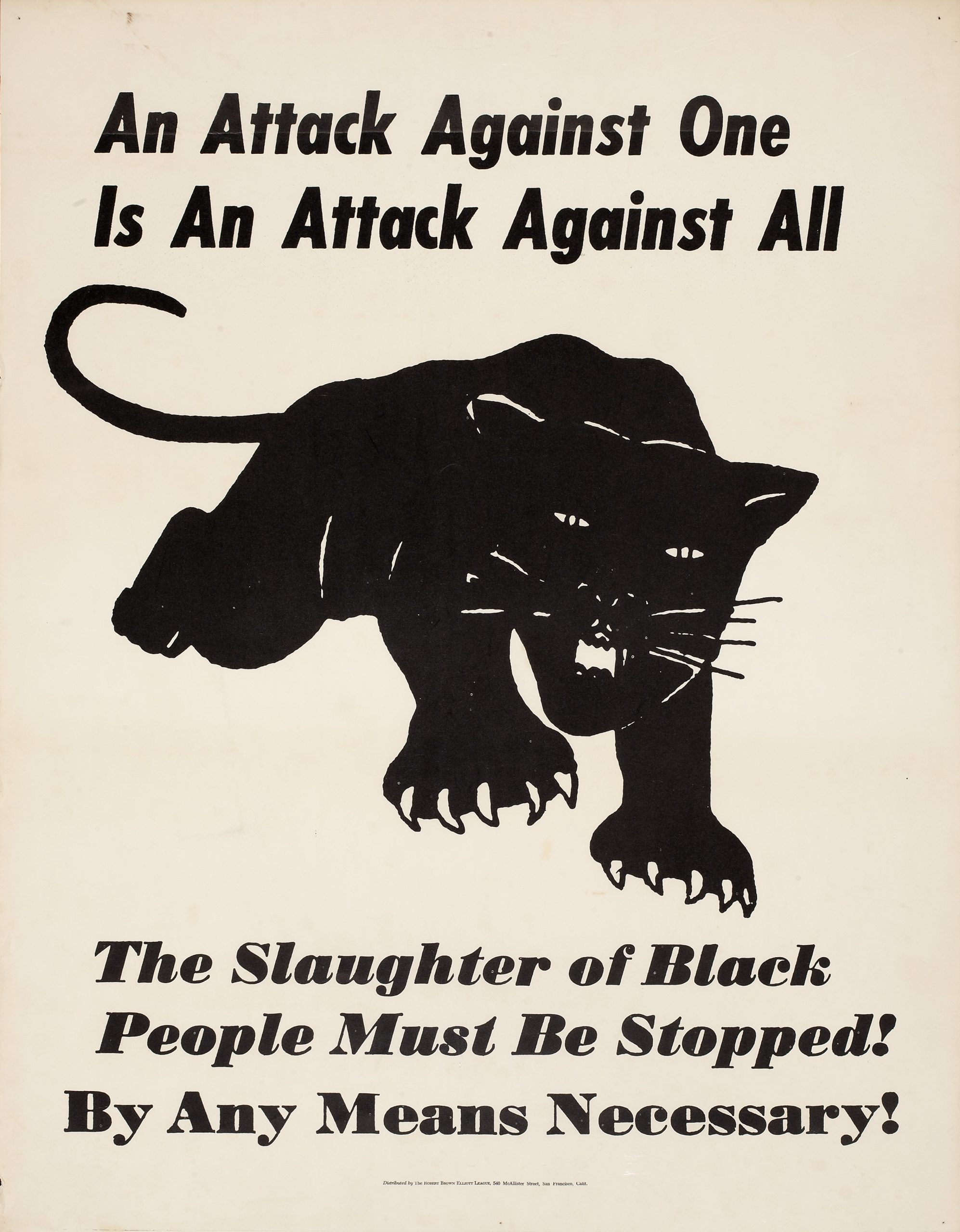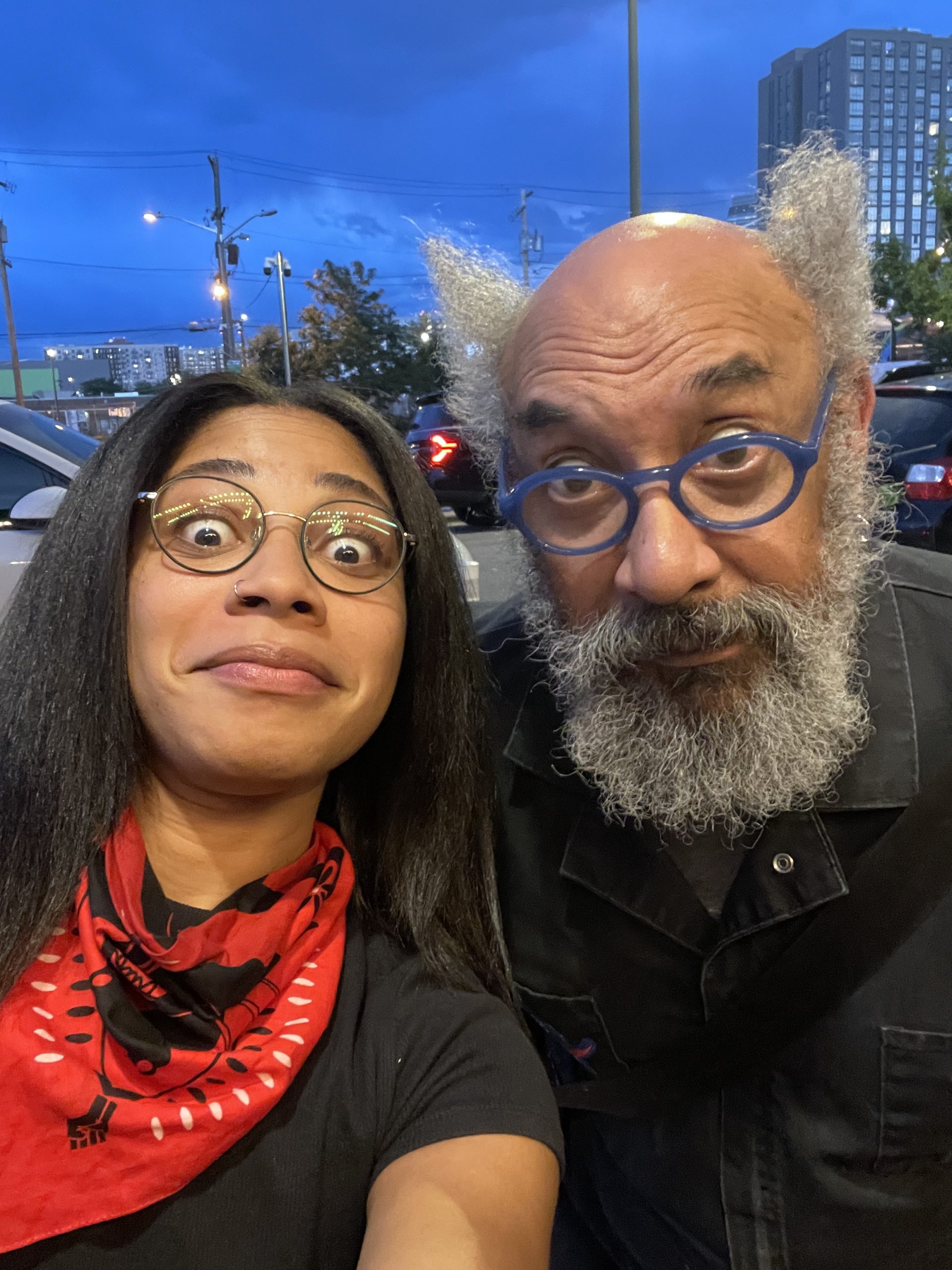
Letters & Slugs with Rick Griffith
.

Es-pranza and Rick in action
In June, I stayed in Denver, Colorado for a week to learn about letterpress printing from one of the most inspiring, thoughtful, and creative letterpress printers I’ve ever had the pleasure to meet. Rick Griffith is a writer, educator, and activist whose designs are closely informed by the radical power of words.
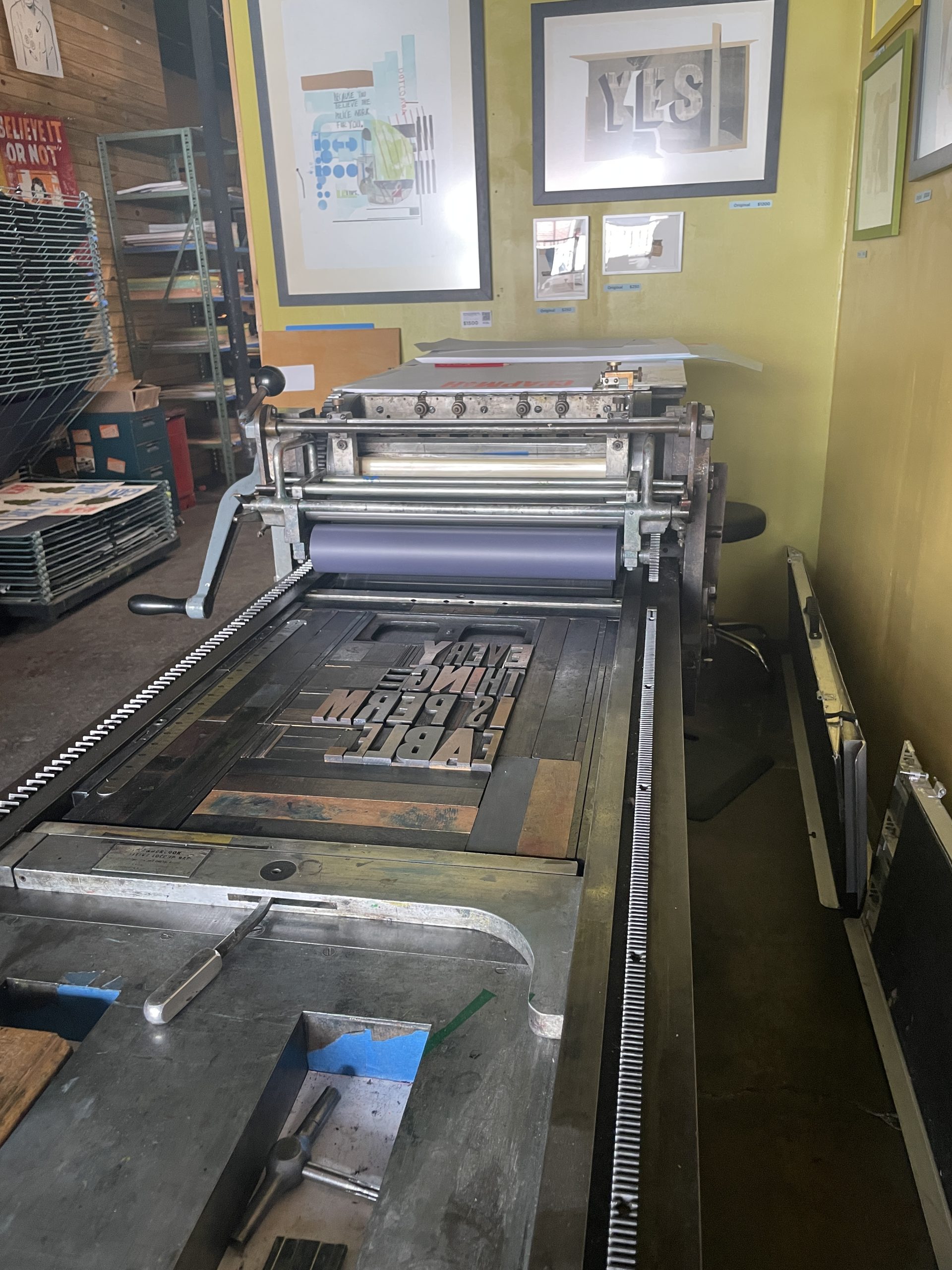
A press in MATTER
When I arrived at MATTER, Rick’s design consultancy studio with an accompanying bookstore, one of the first things he said to me was, “The printing press is an extension of my writing process,” words that I grew to understand more closely as I was given a preliminary tour of the large space with two Denver locals passionate about education. We saw shelves upon shelves of books ranging from the humorous illustrations of Seymour Chwast to the raw signs protesting the war on Gaza. The books Rick pulled, and many others that occupied a full floor-to-ceiling space, seemed to inspire and encourage his mastery of the posters and prints he creates, all driven by his compassion and urgent commitment to social justice.
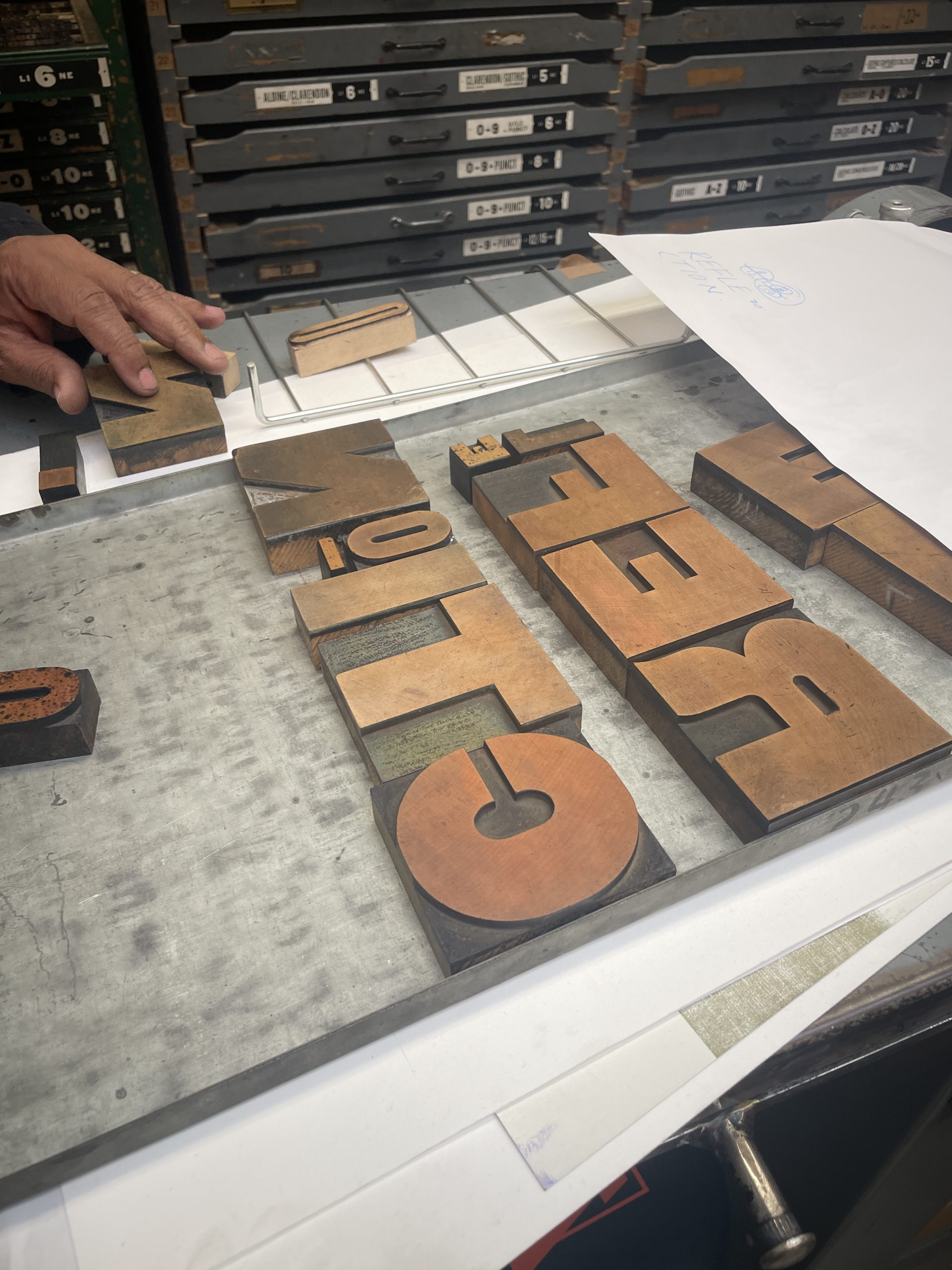
Letterpress is a process that involves inking raised type to make an impression on a surface using a printing press or machine. It includes typesetting, where the printer organizes type (or letters) onto a tray for printing. I knew very little about this process before but during my visit I attended Print Truth to Power, a printmaking workshop hosted by MATTER that invites the public to move through the studio and bask in the radical power of words, I began to understand what was required.
Throughout the week I’d watched in awe as Rick quickly glided across the floor, grabbing pieces from racks and letters from drawers, all muscle memory for a skilled designer but a revelation for a novice. We set the phrase, “Truth Is a Reflection, If You Allow It” which required repeated movement and the swapping out of letters: capital and lowercase, thick and thin variations of “N” “O” “L” and “E”. With red ink slathered onto the roller, we set the type, and began printing on pastel-colored paper to create the final work.
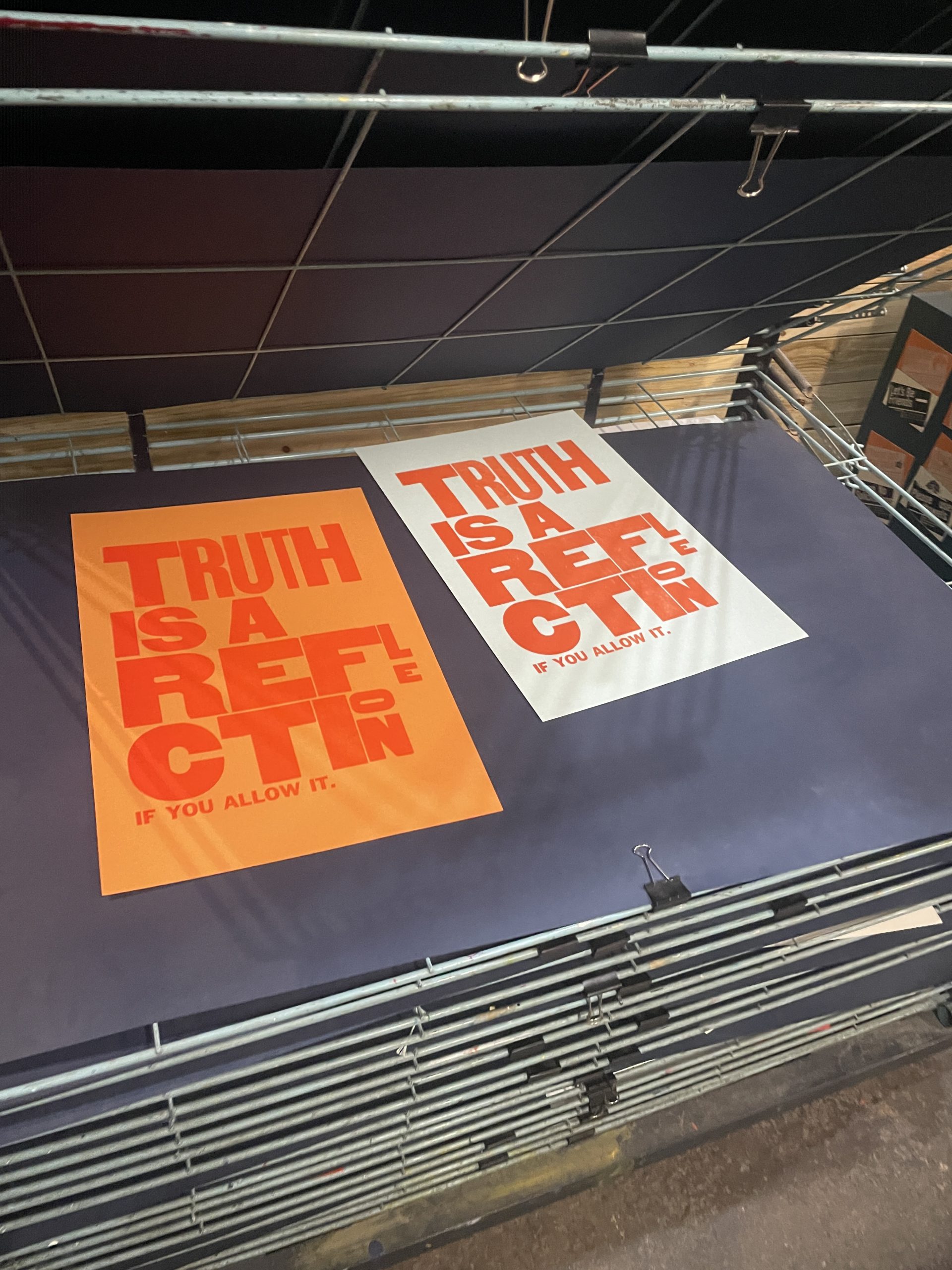
Two prints on a drying rack.
I should add that on my first day, during that initial tour, we passed by a large metal machine that Rick explained was used for casting, another part of the letterpress process where small rows of type are set and inserted into a machine that permanently melds them together, creating what is colloquially known as a “slug.” This word became part of my growing letterpress vocabulary, and I mentioned to Rick that before I returned to New York City, I needed to make my own slug! Thus, on the final day, I had the privilege of spelling my name out on a slug, a process that included the coveted job of searching for a hyphen in a sea of small type (because a minus sign wouldn’t cut it). Making a slug essentially became my final project in Denver, one that gave me a permanent keepsake from my visit.
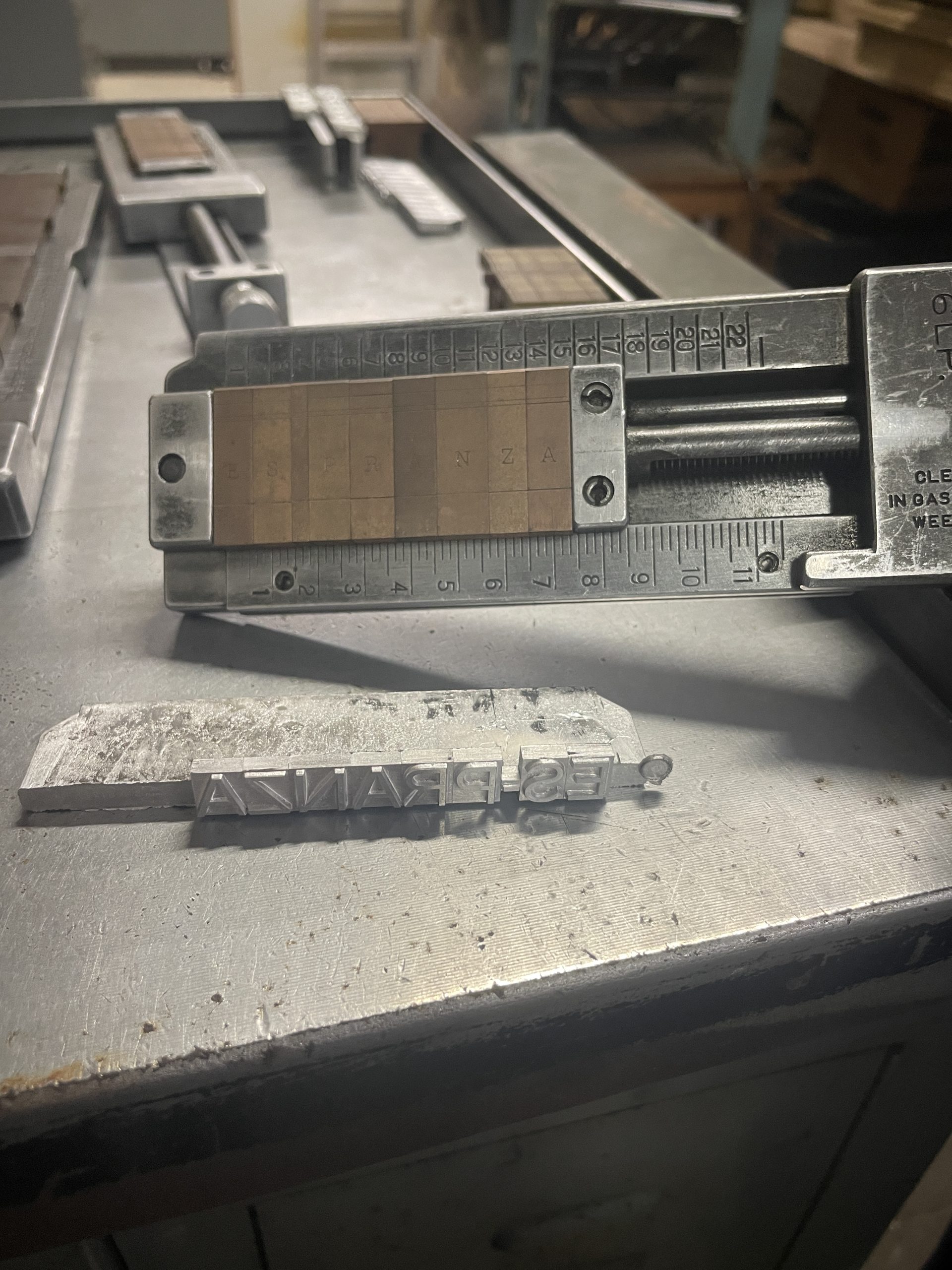
A slug!
I laughed a lot with Rick during my visit since he expertly drizzles humor into all aspects of his life, not least his professional one. He effectively represents MATTER’s larger message, one asserting that revolutionary acts do not have a step-by-step playbook and that design is not a rigid set of constraints intended to intimidate the uninitiated. Rick has cultivated and nurtured a community that uses design to empower anyone with a value system and an idea or two.

